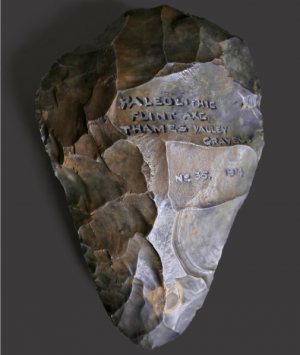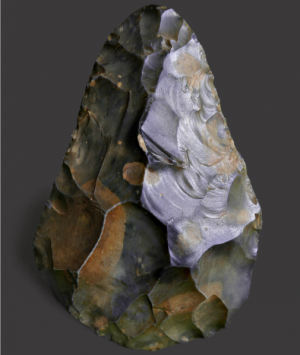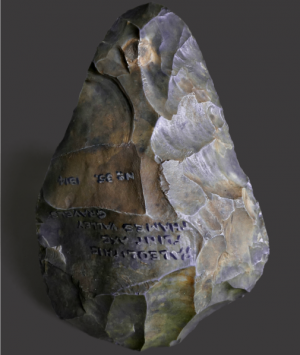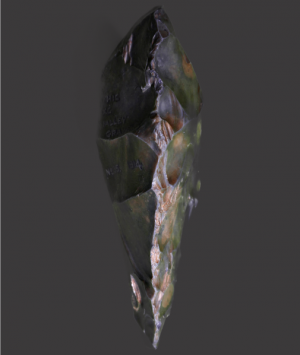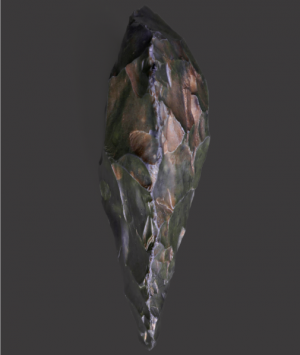Item number: 2777
An Important Large British Palaeolithic Flint Hand Axe
From the Thames Valley Gravels, London
Discovered in 1914
Ex English Private Collection, Passed by Descent
With a variety of motivating factors, ever since their conception ancient flint tools have been coveted and prized by mankind. In the late 18th Century the pioneering Antiquarian ‘John Frere’ sent two flint hand axes to the Royal Academy in London and in an associated letter famously conveyed his radical interpretation of the finds, concluding that they had been “fabricated and used by a people who had not the use of metals”, in addition, “the situation in which these weapons were found may tempt us to refer them to a very remote period indeed, even beyond that of the present world”. A view disregarded at the time due to overwhelming conflicting religious beliefs.
During the 19th and early 20th century, a combination of further discoveries, expanding knowledge and understanding of these ancient artefact’s led to extensive collections of hand axes being formed, mainly consisting of finds from gravel pits sourced from workmen eager to supplement their income with the additional pay such discoveries opportuned.
These finds are still being studied and debated, based on much evidence it is now generally accepted that many fine implements had a significance far beyond function, a visual display of the makers knowledge and skill or as a means of conveying the owners social status or power and certainly providing conclusive proof that our ancient ancestors possessed a high degree of culture evidenced in the beautiful reoccurring hand axe forms which are today being reappraised and increasingly appreciated as art in the contemporary world, in addition to their important archaeological significance.
A significant number of Palaeolithic hand axes were discovered in London in the late 19th/early 20th Century during this period of rapid urban expansion and extensive gravel extraction along the Thames Valley which once provided a naturally advantageous environment, exploited by Palaeolithic hunter-gatherers.
This rare, remarkable, large hand axe displays exceptional workmanship of the finest quality and has acquired a most desirable patina. Discovered in 1914 and marked accordingly, This superb antiquity was discovered along with a number of other outstanding prehistoric tools in an old chest on the point of collapse where they had remained practically untouched, sitting in the same spot in the same room, not seeing the light of day for around one hundred years!
Dimensions (Approximate)
Length: 16cm, Width: 10.5cm (At widest point)

